The six Thinking Hats is a method for effective and out of the box thinking. This technique is meaningful for team meetings, idea generation, problem solving and decision making. Whether it is finding a new strategic approach, refining your marketing, or creating new product designs: Six Thinking Hats enables a systematic thinking for better ideas and decisions. It is also an excellent technique for brainstorming and collaboration sessions.
Developed by Edward de Bono, the Six Thinking Hats is a parallel thinking technique which looks at an issue from different angles. Each imaginary hat represents a certain way of thinking. The color of the hat stands for one specific way of thinking. The method is ideal in a group setting, but can be also applied by individuals.
Our collaborative six thinking hats template enables you to run a six thinking hats session in-real with your team in even when distributed. Export the template as a PDF when complete. If you’d like to explore additional brainstorming techniques, we’ve rounded up 15 brainstorming techniques and templates you can use collaboratively with your team.
What are the Six thinking hat?
Each hat in the six thinking hats technique represents six different ways of thinking. To conduct the method, it is important that only one imaginary hat is worn at a time. Each hat is assigned a unique color and is a metaphor for a specific thinking system. These hats are:
 Blue hat (managing & organizing): Usually the facilitator and session leader wears this hat. The blue hat is responsible for organizing the whole process and to structure it. He gives instructions about the use of other hats and the sequence. The blue hat also is the first and last hat to use. He opens the session and wraps it up.
Blue hat (managing & organizing): Usually the facilitator and session leader wears this hat. The blue hat is responsible for organizing the whole process and to structure it. He gives instructions about the use of other hats and the sequence. The blue hat also is the first and last hat to use. He opens the session and wraps it up.
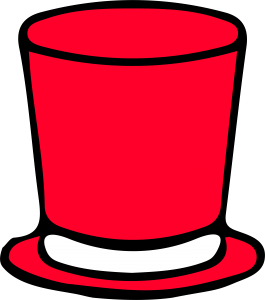 Red hat (emotions): Tapping into your feelings. When wearing this hat, you try to feel the emotional reaction people will have of your decision or product. Try to follow your gut feeling, focusing on intuition and emotion like fears, dislikes, love, and hatred.
Red hat (emotions): Tapping into your feelings. When wearing this hat, you try to feel the emotional reaction people will have of your decision or product. Try to follow your gut feeling, focusing on intuition and emotion like fears, dislikes, love, and hatred.
 White hat (information & facts): Wearing this hat, you collect information, data and facts concerning the issue that you want to solve. Your own opinions or feelings have to be excluded. Take only objective information into account.
White hat (information & facts): Wearing this hat, you collect information, data and facts concerning the issue that you want to solve. Your own opinions or feelings have to be excluded. Take only objective information into account.
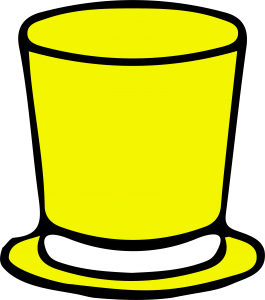 Yellow hat (positive thinking): You focus on benefits and opportunities. You look at best-case scenarios. A overall positive and optimistic attitude is key for wearing the yellow hat.
Yellow hat (positive thinking): You focus on benefits and opportunities. You look at best-case scenarios. A overall positive and optimistic attitude is key for wearing the yellow hat.
 Green hat (creativity): Use your creativity and imagination to solve problems. Brainstorm, dream and generate new ideas. Don’t be satisfied with the first idea, try to produce more alternatives and really think outside the box.
Green hat (creativity): Use your creativity and imagination to solve problems. Brainstorm, dream and generate new ideas. Don’t be satisfied with the first idea, try to produce more alternatives and really think outside the box.
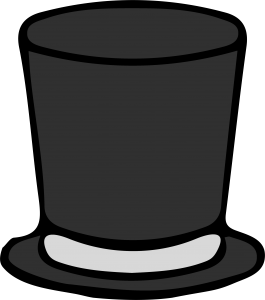 Black hat (cautious & critical thinking): You’re now observing opposite from the yellow hat. You think critically and take a pessimistic view. You ask for worst case scenarios and the worst possible outcome.
Black hat (cautious & critical thinking): You’re now observing opposite from the yellow hat. You think critically and take a pessimistic view. You ask for worst case scenarios and the worst possible outcome.
How to use the six thinking hats template
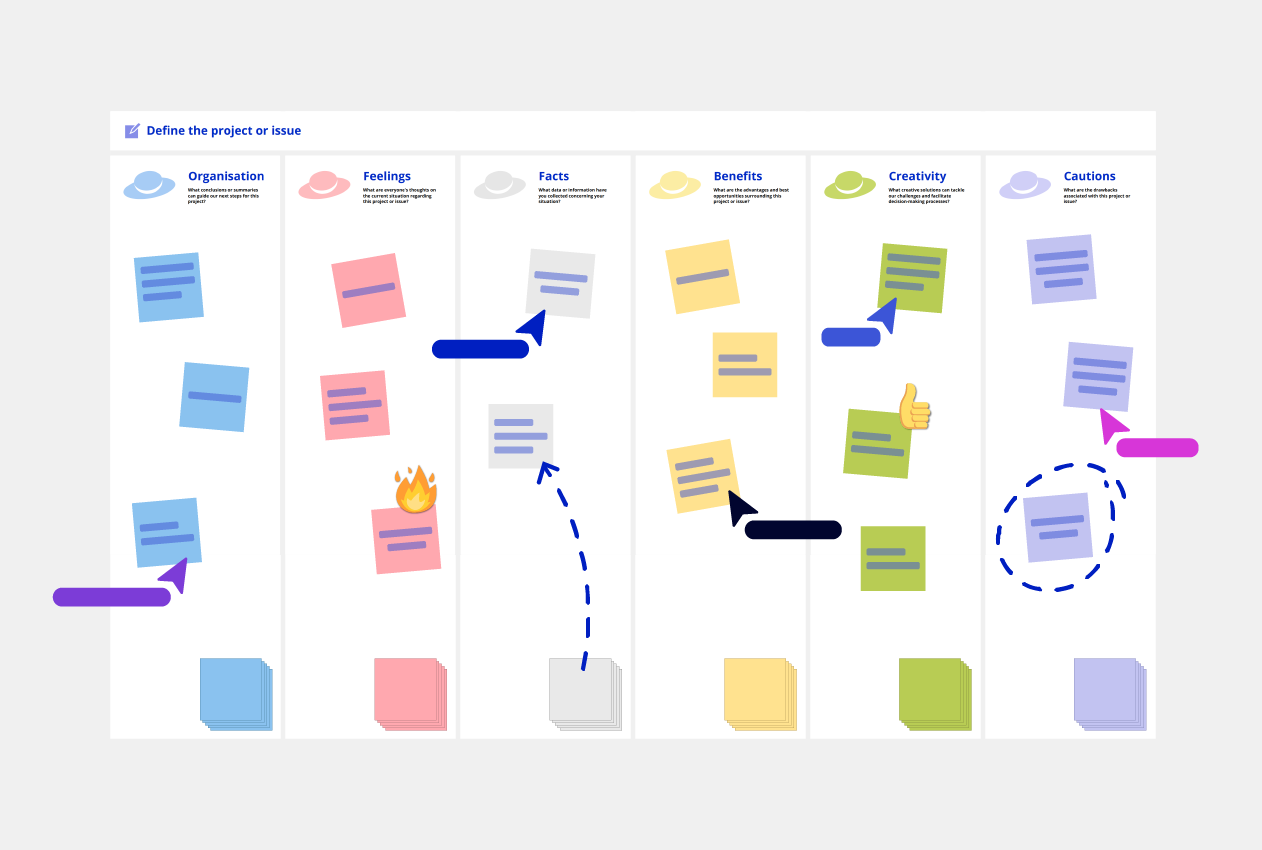
Thanks to Conceptboard’s interactive digital whiteboard, it’s now easy to conduct a remote Six Thinking Hats session. We’ve even made a free ready-to-use template to save you time and effort.
- Invite all your team members to a remote meeting and send them a link to the Conceptboard template.
- Allocate a facilitator who will wear the blue hat, and explain the purpose of the session based on the problem you are trying to solve
- You can follow the color sequence on the board or mix it up, but it’s important that everyone wears the same color at the same time to achieve focus.
- All team members can add their ideas to the board in real time using colored sticky notes
- The blue hat facilitator ensures team members keep focused on each topic and guides the session.
- Once you’ve completed all the segments, allow time to discuss the different ideas and allocate tasks to keep moving the project forward.
Sequences of hats
The sequence of hats can be determined and fixed before the sessions starts or with a more flexible approach adjusted throughout the session:
- Use any hat as often as useful.
- You can wear a hat once and alone or as part of a sequence with more hats.
- You don’t have to use every hat in a session.
Depending on the goal and issue you can mix and match different hats. Some examples:
- If you are looking for new ideas or products, you could use a sequence of blue – green – red – blue. The green hat would use creativity to develop new ideas. After that, the red hat thinks about what feelings these ideas spark.
- For feedback you could use blue – yellow – black – green – blue. The yellow hat is used to be optimistic and give positive feedback. After that the black hat focuses on problems and applies critical judgment. Then use the green hat to think about solving the problem and to come up with solutions.
Benefits of the Six Thinking Hats template
The method enables participants to think deeply and without threatening the ego. It is not about opinions, but about exploration and innovation. The technique also supports collaboration and togetherness. It saves time and enables better decision making.
If you are interested other ideation methodologies that spark innovation and creativity, have a look at our articles on Brainwriting, Brainstorming and visual thinking. Or check out our blog for our exhaustive article repository. Try Conceptboard with a 30-day free trial.

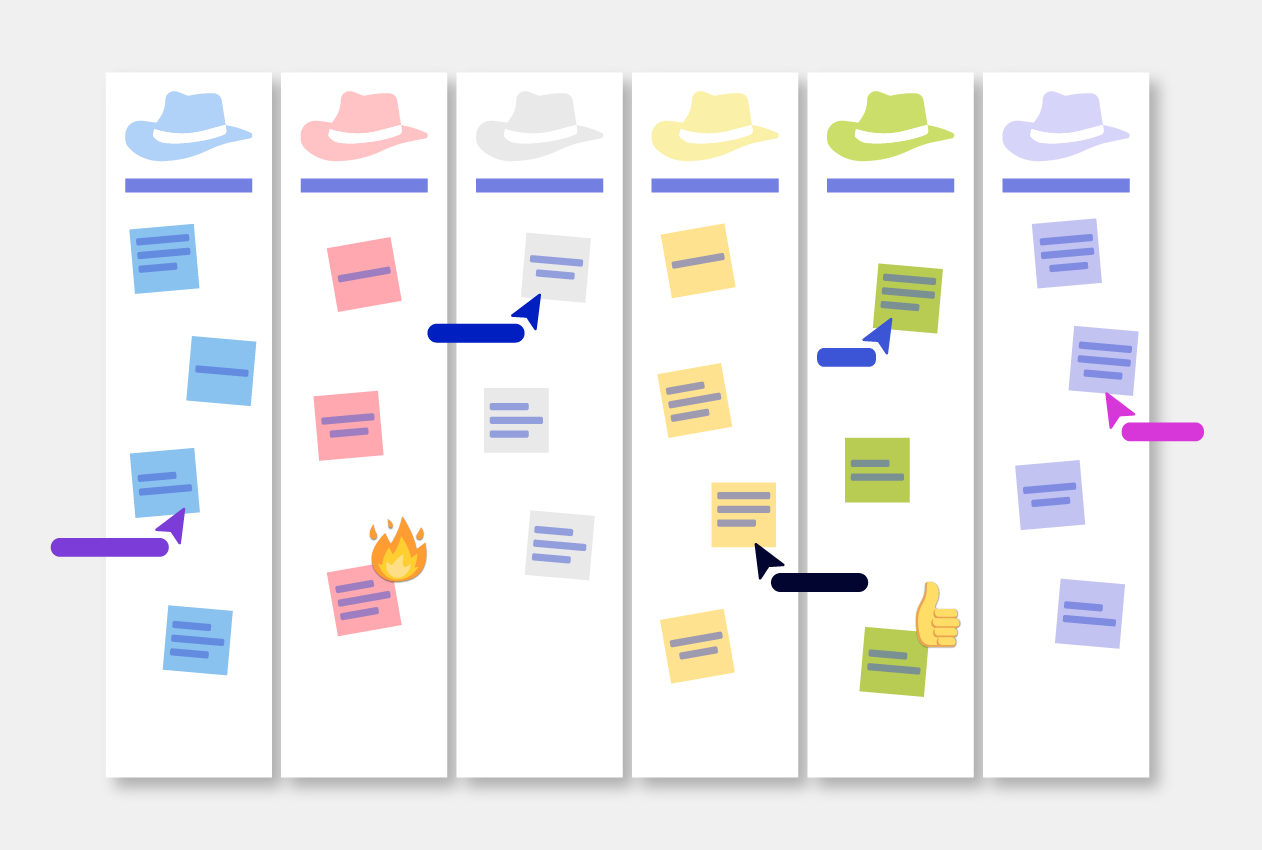
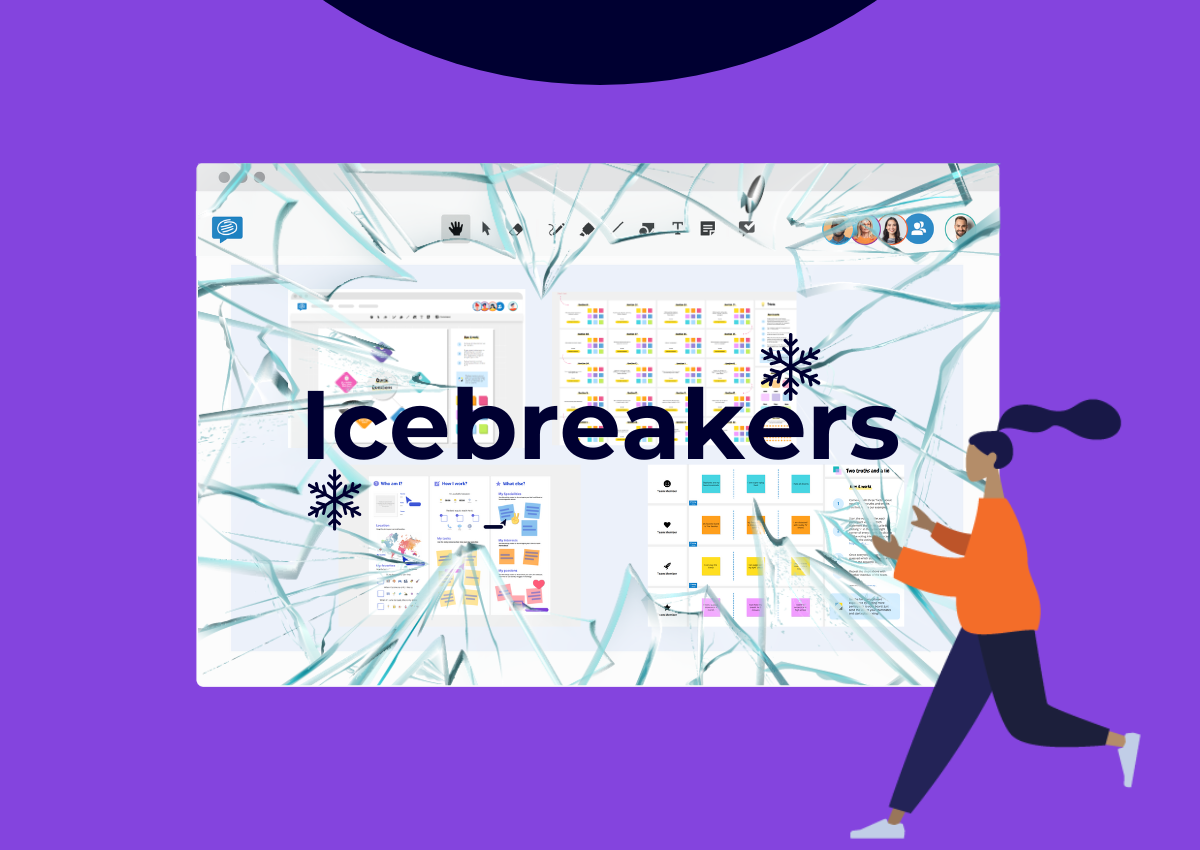

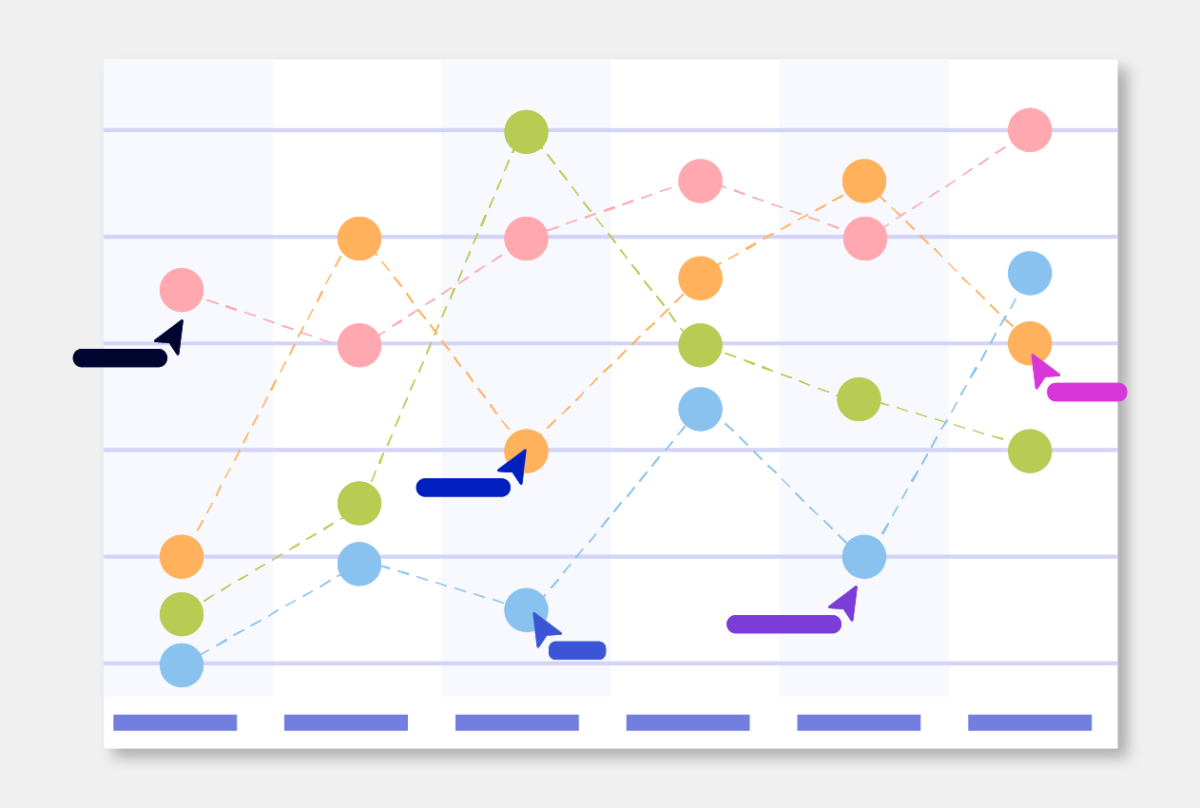
2 Comments. Leave new
Hey there! Just a little tweak…the white hat is for facts and information and the black hat is for cautions. They’re just labeled backwards in your template image.
Hi Lorea,
Thank you for the heads up! The template has been updated. Happy collaborating!